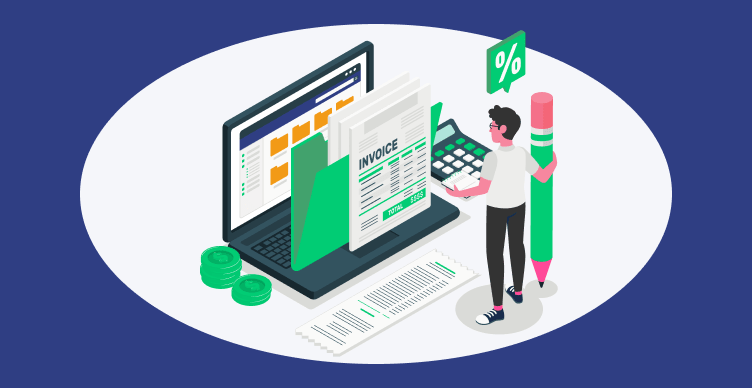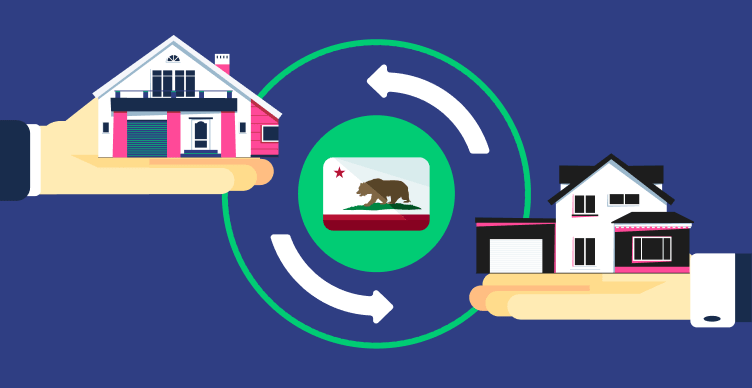Most people need to take out a mortgage loan to buy properties these days. Understanding exactly how much that loan will cost you and what you should expect to pay monthly and annually can be a little complex- but online real estate calculators can help.
A mortgage APR calculation is part of that. One of the many things to work out regarding your loan is the annual percentage rate- but what exactly does that mean?
The following guide explains what mortgage APR is, how it is calculated, and how you can utilize it in your real estate investments.
What Is Mortgage Annual Percentage Rate?
Mortgage annual percentage rate (APR, as it is more commonly called) is a way of measuring how much a mortgage loan actually costs. Unlike other mortgage calculators, a mortgage annual percentage rate calculator accounts for more than just the interest rate- including the origination fee, closing costs, and any other fees that makeup part of the loan.
Many borrowers confuse the APR with the interest rate, but they are not the same. Mortgage interest rates are solely the amount a lender charges annually for providing the loan- but APR refers to the amount of money you pay to the lender compared to the original loan amount.
Put as simply as possible, your mortgage APR represents what the interest rate would be if you included all other fees and costs related to the loan in your monthly payment. In other words, it is the annualized cost of your loan with all expenses included.
How Is a Loan APR Calculated?
APR is calculated in four stages to create a hypothetical interest rate where all costs and fees are rolled into the monthly mortgage payment.
The first step is to total the cost of any additional charges that come with your mortgage loan (excluding interest). These may include a loan origination fee and closing costs. Add the total to the actual loan amount.
Next, the mortgage interest rate is applied to the combined amount of the principal loan amount and additional costs. The interest rate is applied annually for every year of the loan term to produce a total mortgage debt for the principal and interest (plus extra costs).
From there, a monthly payment is worked out based on the total. Usually, this is a simple case of dividing the total amount owed by the total number of months in the loan term. Fixed-rate loans may be calculated a little differently than an adjustable-rate mortgage.
Once the would-be amount of the monthly mortgage payments is determined, it is then converted into an interest rate.
As you can see, the calculation is a little complex, which is why it is best to use an online calculator provided by a reliable source. They are usually free to use!
Mortgage APR Calculation Formula
Here is a basic overview of the APR calculation. Remember, the application of the annual rate may vary depending on the terms of your mortgage.
- Additional loan costs + Principal loan amount = New principal loan total
- New loan total + Annual rate for interest over the entire loan term = Gross loan amount
- Gross loan amount ÷ Total number of months in the loan term = Hypothetical monthly payment
- Hypothetical monthly payment converted to interest rate = APR
What Factors Impact APR?
Before we take a look at an APR calculation in a real estate scenario, let's talk a little more about the variables and how they affect your rate.
How Many Monthly Payments You Have
The term of your loan- a.k.a. the length of time you will spend paying it off- has a significant impact on the cost of your credit. APR calculations incorporate more than just the interest paid- but it is a big part of the final number.
Generally speaking- the most common mortgage terms are between 15 and 30 years. The more years, the more monthly payments. More payments mean lower amounts owed each month, but it also means your overall interest payment will be higher.
Longer loans cost significantly more in interest, which has an impact on your mortgage APR.
Whether or Not You Need Mortgage Insurance
One of the major additional costs for some borrowers is mortgage insurance. An APR calculator takes this into account and rolls it into the total, so if you have it, it will make your rate higher.
Mortgage insurance can be a major expense, as you continue paying it for a long time. Luckily, most people don't need it. As long as your down payment covers more than 20% of the property's value, lenders are usually happy to provide a loan without insurance. This may vary between companies.
Avoiding the need for mortgage insurance is something to seriously consider. If you can't afford a 20% down payment on a particular property but don't want the added expense of an insurance policy, it may be worth considering a different investment.
The Other Fees Your Mortgage Lenders Charge
Insurance isn't the only thing that kicks up your APR. Several other fees apply to most loans- although the specific amounts vary significantly.
One of the things to look out for is the loan origination fee. This charge covers the services provided by the lender for the setup of the loan. They apply a loan origination percentage- usually between one and five percent of the loan amount.
Sometimes, you can negotiate lower origination fees- especially if you compare loans from other lenders.
Your Interest Rate
APR is so often confused with interest rate, partly because your interest payment is one of the things that most affect mortgage annual percentage rates.
Interest is the primary expense in any mortgage- fixed rate or adjustable rate. No matter how you look at it, you are going to spend a lot more than you borrow over the years of paying interest.
A lower interest rate is always something to look for, especially if you are opting for a 30-year loan term. Your APR will reflect your interest rate. It is usually just a little higher.
Discount Points
Discount points are a tool used in mortgage lending that allows the borrower to pay a higher amount upfront in exchange for a lower stated interest rate. They make up part of the closing costs and are usually priced at 1% of your loan amount per point.
These points are effectively prepaid interest, which can save you a good amount of money over time and reduce your APR.
Example of an APR Calculation in Real Estate
Let's look at a hypothetical APR calculation. In this example, the borrower is looking at a $300,000 loan with a 30-year loan term. They have been given a fixed interest rate of 5%.
Based on these numbers, their monthly payment will be $1610.46, and the total interest paid over the course of the loan will be $279,769.69.
The lender charges 1.5% in origination fees, which equals $4,500.
Our investor decided to purchase two discount points, which cost $3,000 each.
They do not have mortgage insurance.
All other fees owed for the closing process come to $1000- so the total closing cost for this loan is $11,500.
The basis of this APR calculation would look like this:
- $300,000 principal loan + $11,500 costs = $311,500 total loan
- This figure would be calculated at 5% interest to give a new would-be monthly payment
- The APR calculator would convert this into a new interest rate, which becomes the APR.
In this example, the APR would be 5.334% compared to the 5% interest rate.
When to Use a Mortgage APR Calculator
There are a few uses for a mortgage APR calculator- most of them related to comparing loan offers and deciding on a strategy. Here are two of the ways to leverage a mortgage APR calculation in real estate.
Shopping for a Mortgage
When you first start hunting for a mortgage, you will notice a huge variety in closing costs and interest rates. One of the best ways to see what deals are preferable is to punch the numbers into an APR calculator.
Say you have quotes from two potential lenders. One has a better interest rate but charges more for the origination fees and has higher closing costs all around. Another charges more interest and has a shorter loan term- but has agreed to waive the origination fee completely.
If you are not sure which option will cost less, all you need to do is run them both through a calculator. This gives you a better picture of the actual cost of both loans all things considered.
Finding the Best Structure and Strategy for Your Loan
You can also use it before you look at offers from lenders. Deciding whether you want to go for a longer loan term, more discount points, fixed-rate loans, etc, can be confusing- even more so when you try to factor in what you can and can't afford.
When you look at factors such as gross monthly income, available cash for an up-front payment, and how quickly you expect a return, your options can seem even harder to pin down.
With an APR calculator, you can play around with ideas and compare the actual costs of different loan strategies to find the one that works for you.
Use DoorLoop Real Estate Calculators to Learn More about Your Investments
Your mortgage is only one piece of the property investment puzzle. There are so many things to think about when choosing an investment and managing the ones you already have, and DoorLoop calculators can help.
From pricing comparisons to return on investment, DoorLoop helps property investors take a closer look at their finances and make more informed decisions with their portfolios.
That's not all DoorLoop does. It is also a comprehensive and advanced real estate investor solution that streamlines the world of rental property management. The impressive suite of tools helps you optimize your business, save time, enhance profitability, and be more in control of your property portfolio.
If you want to learn more about the many solutions and benefits offered by DoorLoop, schedule a free demo to explore the software yourself.
Summary
Securing a mortgage is one of the most important parts of a real estate investment journey, and having the best deal can make or break your financial strategy going forward.
Considering APR calculations in your mortgage payment formula, as well as looking at interest rates can help you gain a better understanding of the actual cost of credit on your loan.











































































































.svg)





















